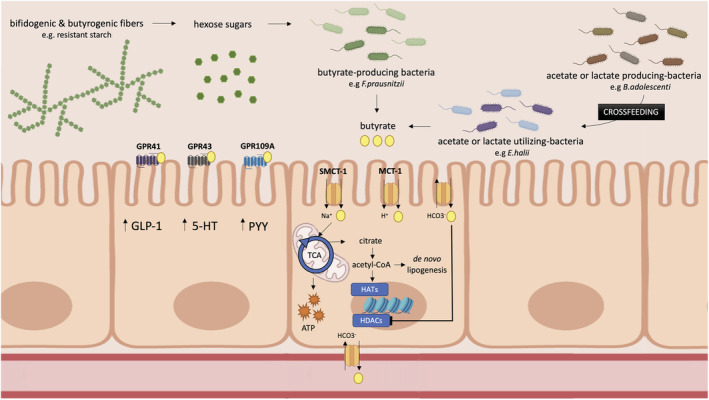FIGURE 2.

The production of butyrate from indigestible carbohydrates and its mechanism of action in the colon. Hexose sugars derived from complex indigestible carbohydrates are broken by specific bacterial strains and either produce butyrate directly (e.g., Faecalibacterium prausnitzii, Eubacterium Rectale , and Roseburia intestinalis) or via cross‐feeding pathways in which lactate or acetate is converted to butyrate. Butyrate is then absorbed into intestinal cells, predominantly by active transport systems including SMCT‐1 and MCT‐1. Thereafter, butyrate is either oxidized in the TCA cycle to generate ATP or cytosolic acetyl‐CoA is generated, which can be utilized for lipid synthesis or can activate HATs thereby influencing gene expression whereas intracellular butyrate can directly inhibit HDACs. 5‐HT, serotonin; acetyl‐CoA, acetyl coenzyme A; ATP, adenosine triphosphate; GLP‐1, glucagon‐like peptide 1; GPR109A, G protein‐coupled receptor 109A; GPR41, G protein‐coupled receptor 41; GPR43, G protein‐coupled receptor 43; HATs, histone acetylases; HDACs, histone deacetylases; MCT‐1, monocarboxylate transporter 1; PYY, peptide YY; SMCT‐1, sodium‐coupled monocarboxylate transporter 1; TCA, tricarboxylic acid cycle. Created with BioRender.com
